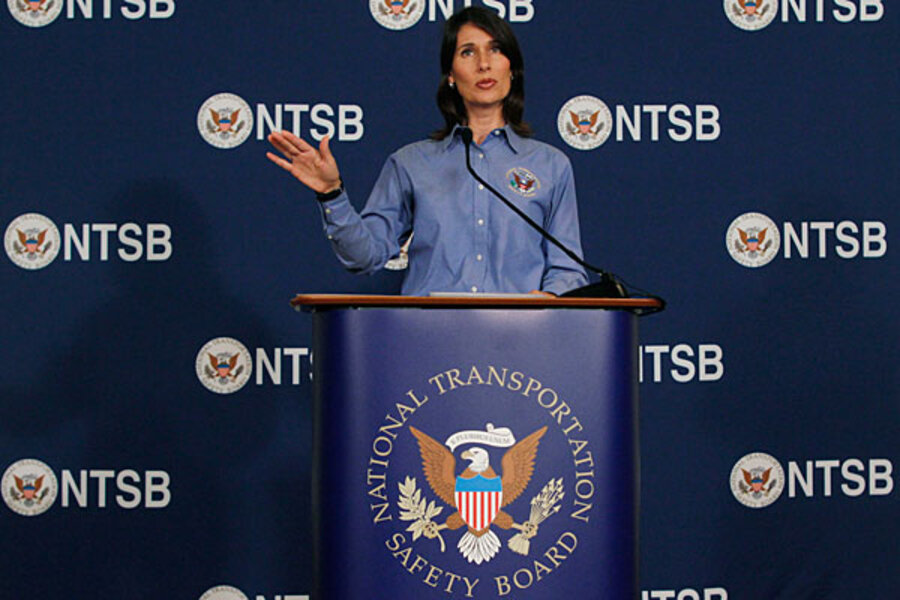Asiana crash investigation criticized for giving too much information
Loading...
From Twitter pictures of the burned cabin to a second-by-second account of the aircraft’s flight speed, investigators are being unusually forthcoming with details about the Asiana Airlines crash at the San Francisco airport, leading some to champion a new era of transparency while others warn it does more harm than good.
In the days since the July 6 crash, the National Transportation Safety Board (NTSB) has released detailed information about its investigation including timelines, pictures, and information about the pilot’s background that some transportation analysts say is unprecedented.
“The NTSB has always been available to answer journalists’ questions after aviation accidents, but it often took a degree in aeronautics or long years on the airline beat to understand what was being said. This crash, however, is being explained in real time and in much simpler terms than in the past,” former transportation journalist Micheline Maynard wrote in a Forbes column this week.
In the past five days the agency has tweeted and posted multiple pictures of the aircraft on its website, uploaded videos of its daily briefings, and provided thorough accounts of the plane speed, hours of experience of the pilots, and cockpit conversations.
In comparison, information about the last fatal accident in the United States involving a commercial flight was slower and more traditional. When a Continental Express flight crashed while approaching the Buffalo airport in February 2009, there was no social media stream with photo and video footage.
The new transparency is particularly worrisome to the Air Line Pilots Association, which released a statement this week saying that it is “stunned by the amount of detailed operational data from on-board recorders released by the [NTSB] this soon into the investigation.”
The union, which represents only American pilots, has particular reason to be concerned with much of the preliminary media reports focusing on what role pilot error played in the crash. But it contends that the level of information released could adversely affect the investigation:
“It is imperative that safety investigators refrain from prematurely releasing the information from on-board recording devices,” the organization wrote. “We have seen in the past that publicizing this data before all of it can be collected and analyzed leads to erroneous conclusions that can actually interfere with the investigative process.”
Deborah Hersman, chairman of the NTSB, responded to the criticism by telling the press her organization is responsible to the public.
“We are the advocate for the traveling public,” Ms. Hersman said Tuesday.
Hersman, who at age 39 became the youngest chairman of the NTSB when she was appointed by President George W. Bush in 2009, has become the face of the new transparency push as she holds daily press conferences in San Francisco and multiple interviews with cable news outlets.
“Since she's taken over, it seems like information has been much more accessible to the public," Frank Pitre, a lawyer who closely follows the agency and is representing two passengers who were on the Asiana flight, told the San Francisco Chronicle.
Hersman also faces a public with more tools at its disposal for doing its own investigative work. Websites like Flight Aware provide radar data for the Asiana Flight, and anonymous users quickly posted what they claim as the tape of the conversation between air-traffic controllers and the Asiana pilots
“What we know is that if you don’t put the facts out there, in a vacuum other people will create them,” Hersman said in an interview with CBS News. Her organization’s use of social media channels is “about having a conversation with the people who care about the work you do.”
According to Bloomberg, which pulled user comments from the forums at Flyertalk.com, Hersman's approach is earning mixed reviews. Among the postings:
astroflyer: “In the age of twitter, I don’t think it makes sense to withhold any findings at all until 9 months down the road. A large plane crashed at a major American airport. People want to know why and whether the cause might be relevant to their own future flying.”
Milepost: “I expect tomorrow D. Hersman will be detailing the pilots meals and calorie counts, their favorite colors, and answering the eternal question: boxers or briefs. I still think too much raw data is being disclosed in isolated bits and pieces that allow for too much amateur conjecturing, without having gone through the critical review and piece-it-all together analysis.”








